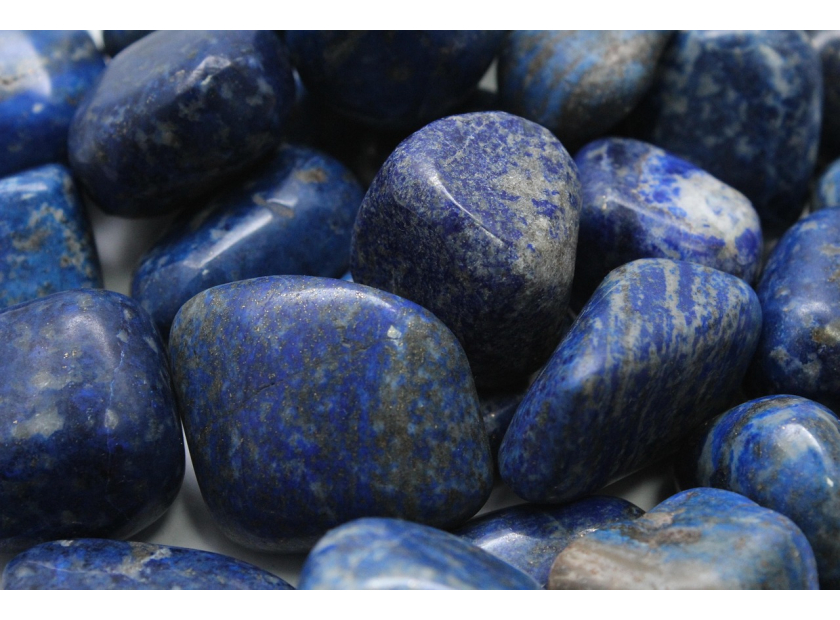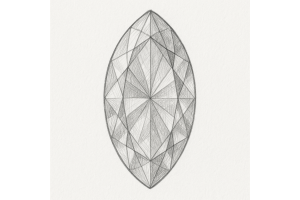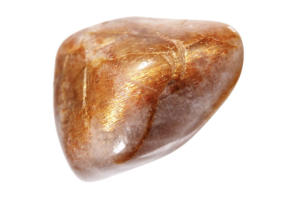GBP
/
GBP
/
Shipping to:
Currency:
How to Identify Genuine Lapis Lazuli: Expert Tips to Spot the Real Stone
Lapis lazuli, with its mesmerising deep blue hue and golden flecks, has captivated humanity for millennia. From adorning ancient Egyptian jewellery to being ground into the precious ultramarine pigment of Renaissance art, this gemstone's allure is undeniable. However, the market today is rife with imitations, making it essential for enthusiasts and buyers to discern the genuine from the fake. This guide will walk you through the key characteristics of authentic lapis lazuli and offer practical tips to ensure you're investing in the real deal.
Understanding Lapis Lazuli
Lapis lazuli isn't a single mineral but a composite rock primarily composed of lazurite, which imparts its signature blue colour. Other constituents often include calcite (white streaks) and pyrite (golden flecks). Historically, the most renowned deposits are found in Afghanistan's Badakhshan province, with other sources in Chile and Russia.
The Prevalence of Imitations
The high value and demand for lapis lazuli have led to a surge in counterfeit versions. Common substitutes include dyed howlite, sodalite, and even glass. These imitations can be convincing, especially to the untrained eye, making knowledge crucial for accurate identification.
Distinctive Features of Genuine Lapis Lazuli
Colour Variations
Authentic lapis lazuli showcases a rich, deep blue, sometimes with slight variations towards violet or greenish-blue. Uniformly bright or overly vivid blue stones may indicate dyeing or synthetic origins.
Pyrite Inclusions
One hallmark of genuine lapis is the presence of metallic gold flecks, known as pyrite. These inclusions should be randomly scattered and not overly concentrated. Their natural, subtle shimmer contrasts with the stone's deep blue, adding to its unique appeal.
Calcite Presence
White streaks or patches of calcite are common in lapis lazuli. While minimal calcite can enhance the stone's character, excessive white areas diminish its value. High-quality lapis has a deep blue colour with minimal visible calcite.
Practical Tests for Authenticity
Acetone Test
Gently rubbing the stone with a cotton swab dipped in acetone (nail polish remover) can reveal dye treatments. If blue colour transfers to the swab, the stone has likely been dyed, indicating it's not genuine lapis lazuli.
Temperature Check
Natural lapis lazuli feels cool to the touch, even after being held for a while. In contrast, plastic imitations warm up quickly in your hand.
Weight and Density
Authentic lapis has a certain heft due to its mineral composition. Imitations made of plastic or resin will feel noticeably lighter.
Recognising Common Imitations
Dyed Howlite and Magnesite
These stones are naturally white and porous, making them ideal candidates for dyeing. Dyed versions often exhibit an overly uniform blue and may show colour bleeding in cracks or drill holes.
Sodalite
While naturally blue, sodalite's hue is typically lighter than lapis and lacks pyrite inclusions. It may also have a more translucent quality.
Glass and Resin
These imitations can achieve the colour but often lack the characteristic inclusions of lapis. They may also have air bubbles, which aren't present in natural stones.
Tips for Purchasing Genuine Lapis Lazuli
- Buy from Reputable Dealers: Established jewellers or gemstone specialists are more likely to provide authentic stones.
- Request Certifications: Authenticity certificates or detailed information about the stone's origin can offer assurance.
- Be Cautious of Bargains: If a deal seems too good to be true, it probably is. Quality lapis lazuli commands a higher price.
For those interested in exploring a variety of gemstone jewellery options, check out gemstone rings for a selection of exquisite designs.
You might also want to browse non-traditional engagement rings if you're seeking something truly unique, or explore gemstone engagement rings to pair beautiful gems with timeless settings.
When to Seek Professional Evaluation
If you're uncertain about a stone's authenticity, consulting a certified gemmologist is advisable. They can perform advanced tests, such as spectroscopy or refractive index measurements, to provide definitive identification.
Frequently Asked Questions
What is the price range of real lapis lazuli?
Prices vary based on quality, origin, and size. High-quality stones with deep blue colour and minimal inclusions are more expensive.
Can lapis lazuli change colour over time?
With proper care, lapis lazuli maintains its colour. However, prolonged exposure to sunlight or harsh chemicals can cause fading.
Is lapis lazuli suitable for daily wear?
With a Mohs hardness of 5 to 5.5, lapis is relatively soft. It's best suited for items like earrings or pendants rather than rings or bracelets that endure more wear.
Does all lapis lazuli have gold flecks?
Not necessarily. While many pieces contain pyrite inclusions, some high-quality stones may have minimal or no visible flecks.
For a visual guide on identifying genuine lapis lazuli, you might find this video helpful:
Is It Real Lapis Lazuli? Identifying Natural, Dyed, and Imitation Stones








